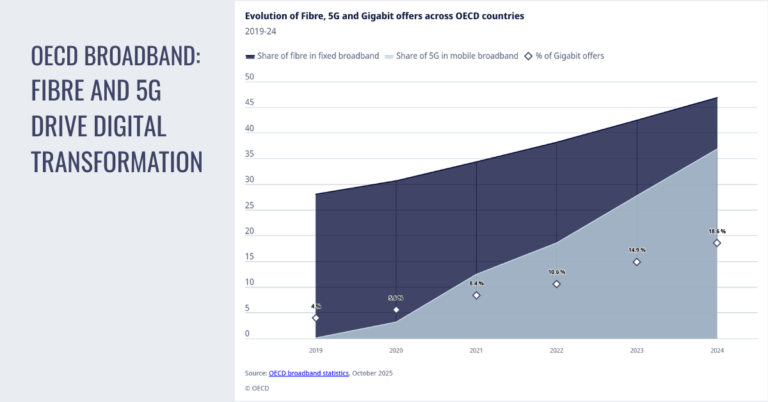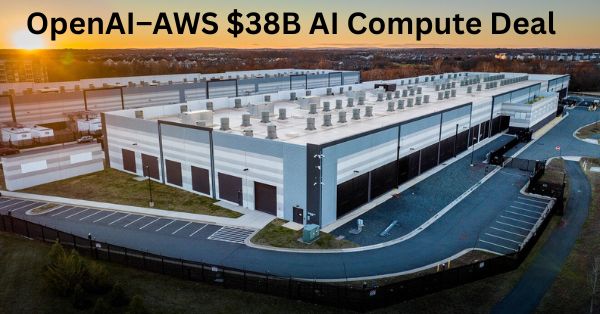In one of the largest infrastructure contracts in tech history, OpenAI has officially been named as the customer behind Oracle’s previously undisclosed $30 billion-per-year data center deal. While the dollar amount was not confirmed by OpenAI CEO Sam Altman, the company has acknowledged its role in the landmark agreement, which was first hinted at in Oracle’s June 30 SEC filing.
The contract represents a major leap in AI infrastructure scale, underscoring OpenAI’s long-term plans to support the exponential growth of AI workloads. It also reflects Oracle’s growing presence in the hyperscale cloud market, positioning it to compete with rivals like AWS, Google Cloud, and Microsoft Azure.
OpenAI Secures $30B Annually in Oracle Cloud Services
The Wall Street Journal first reported that OpenAI was behind Oracle’s record-breaking cloud agreement. Altman later confirmed the partnership—though not the price tag—in a blog post and on social media.
The $30 billion annual figure is staggering. For context, Oracle generated a total of $24.5 billion in cloud services revenue across all customers in its fiscal year 2025. This single OpenAI contract exceeds that, pushing Oracle’s infrastructure roadmap into unprecedented territory.
According to filings, the deal will provide OpenAI with 4.5 gigawatts of capacity—roughly equivalent to the output of two Hoover Dams. That kind of power is enough to serve about four million U.S. homes.
Stargate Project: The $500B AI Data Center Megascale Plan
This contract is part of “Stargate,” a previously announced $500 billion initiative between OpenAI, Oracle, and SoftBank to build massive data centers optimized for generative AI workloads. The first deployment, Stargate I, is currently underway in Abilene, Texas.
Interestingly, SoftBank is not directly involved in the $30 billion portion of the deal, which is exclusive to Oracle and OpenAI.
The scale of this project reflects OpenAI’s need to support large-scale inference and model training. From multimodal large language models (LLMs) to real-time AI-powered assistants and developer tools, OpenAI’s demands for compute capacity are soaring.
Oracle’s Cloud Investment Strategy to Support AI Demand
Oracle has been investing heavily to support this and other hyperscale clients. In its most recent fiscal report, the company disclosed $21.2 billion in capital expenditures. Another $25 billion is expected this year—primarily for data center construction and hardware procurement.
Notably, those figures do not include land acquisition costs, which CEO Safra Catz said are handled separately. While this spending benefits multiple customers, OpenAI is now expected to be Oracle’s largest by far.
Larry Ellison, Oracle’s founder and CTO, has seen a significant rise in personal wealth as a result. Following the deal’s disclosure, Oracle stock surged, briefly making Ellison the world’s second-richest person, per Bloomberg.
OpenAI’s Cloud Spend Surpasses Its Current Revenue
One of the most surprising aspects of the deal is its size relative to OpenAI’s current revenue. The company recently hit $10 billion in annual recurring revenue (ARR), up from $5.5 billion just a year earlier.
This means the Oracle agreement, on its own, is nearly three times the size of OpenAI’s current ARR. It doesn’t include other cloud expenses or operational costs, including its existing commitments with Microsoft Azure, where OpenAI has also deployed significant infrastructure.
In short, OpenAI is betting its future—and massive capital—on the need for proprietary compute capacity to support its roadmap for AI model scaling and deployment.
What the OpenAI-Oracle Deal Means for AI Infrastructure
This move is a clear indication that existing hyperscale providers may not be able to meet the unique demands of future AI systems. OpenAI appears to be hedging against potential limitations in availability or pricing by securing dedicated infrastructure through Oracle.
The Stargate project also suggests a strategic pivot: rather than relying solely on traditional cloud capacity, OpenAI is seeking more control over physical infrastructure, likely to improve performance, energy efficiency, and data governance.
Why Texas Is Key to OpenAI’s AI Infrastructure Expansion
Stargate I’s location in Abilene, Texas isn’t arbitrary. Texas offers relatively low-cost energy, regulatory flexibility, and wide-open space for hyperscale development. With 4.5 GW of power requirements, siting such facilities near renewable or stable power grids is critical.
Additionally, Oracle and OpenAI may benefit from proximity to major network hubs and fiber routes, optimizing performance for data transfer and model distribution.
Oracle’s Competitive Edge in the AI Cloud Race
This deal is a major win for Oracle, long considered an underdog in the cloud race. While AWS, Google, and Microsoft have dominated the market, Oracle’s focus on high-performance enterprise workloads and custom configurations has opened doors to partnerships like this.
The company is also capitalizing on the global demand for AI infrastructure that can support advanced LLMs, robotics, simulation environments, and autonomous agents.
As AI models grow in complexity, compute efficiency and proximity to clean energy sources will become as important as software and model optimization.
What This $30B Deal Means for OpenAI and Oracle’s Future
Several key questions remain:
-
Will OpenAI continue scaling with multiple cloud providers, or eventually migrate fully to its own infrastructure?
-
How will this project affect its existing partnerships, particularly with Microsoft?
-
What kinds of AI applications will benefit most from Stargate’s architecture?
-
How does this level of compute tie into OpenAI’s broader ambitions around AGI (Artificial General Intelligence)?
Despite the unanswered questions, one thing is clear: the scale of AI infrastructure is entering a new era—one defined by megadeals, multi-gigawatt data centers, and vertically integrated stacks.
Oracle, once seen as lagging behind the cloud leaders, is now at the center of one of AI’s biggest infrastructure plays to date.
And OpenAI, with a growing product ecosystem and expanding revenue base, is making bold moves to secure the resources needed to stay ahead in the global AI race.







































